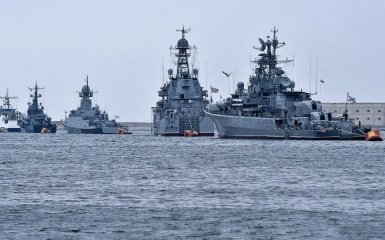Two-thirds of Ukraine's successful attacks on ships of the Russian fleet in the Black and Azov seas occurred over the past year.
Points of attention
- Ukrainian forces successfully attacked and destroyed 26 ships of the Russian Navy between February 2022 and June 2024.
- After several successful attacks by Ukrainian surface drones and missiles, ships of the Black Sea Fleet of the Russian Federation stopped entering the Black Sea.
- Russian ships practically do not go to sea while at the base points due to the increasing frequency and level of damage from Ukrainian attacks.
- Enemy submarines are also at risk, as 25,000 square kilometres of the Black Sea are now a 'grey zone'.
- Ukraine uses effective means of countering Russian submarines, which gives it an advantage in the security of Black Sea waters.
Ukraine accelerated the liquidation of Russian ships
Reports from open sources say that between February 2022 and June 2024, Ukrainian forces damaged or destroyed 26 ships of the Russian Navy operating in the Black Sea region.
According to British intelligence, the strikes took place in the northern region of the Black Sea and the Sea of Azov.
Over the past year, there has been an increase in the frequency and level of damage from attacks in the area of the Crimean Peninsula, and almost two-thirds of the attacks occurred during this period, the British Ministry of Defence notes.
Russian ships are afraid to enter the Black Sea
According to the Navy spokesman, Dmytro Pletenchuk, after a series of successful attacks by Ukrainian surface drones and missiles, ships of the Black Sea Fleet of the occupation army of the Russian Federation should have stopped entering the Black Sea.
After the loss of several VDK, they focused on using ferries for cargo transportation. That is, criminals traditionally hide behind the backs of civilians. There is no mention of ships entering the northwestern part of the Black Sea at all. Those ships that are not carriers of cruise missiles are not currently involved in actions at sea, because for this they need to enter the zone of damage of our means. They did not understand it immediately, but the stage of acceptance has come, Pletenchuk emphasises.
He emphasizsed that enemy warships currently practically do not go to sea.
One submarine of the Russian Federation's occupation army is in the Black Sea.
The Russians have understood their place and practically do not go to sea. They conducted some training in Azov, but then quickly returned to Novorossiysk. Only a submarine remains in the Black Sea, but it is presence for presence's sake. All other ships are still at the base points, and when it starts to fly there, they quickly go to the outer raid, run like cockroaches, so as not to get caught. This is the mode in which they exist, Nay spokesman says
According to him, enemy submarines cannot always stay at depth and must return to their base points.
In order to protect themselves from attacks, the Russians have even developed some know-how — during loading in ports, submarines are kept in a semi-submerged state, so that only the gangway can be seen on the surface, Pletenchuk explains.
He also added that the world currently can effectively counter submarines.
Moreover, in the Black Sea, it is not something extraordinary, but the diesel-electric "Varshavyanka" that has arrived. In Moscow, of course, they say that these boats of project 636 are some kind of super-inconspicuous, but countering them is a matter of the availability of technical equipment, - notes the spokesman of the Armed Forces Navy.
Pletenchuk emphasized that the 25 thousand square kilometres of the Black Sea are currently a "grey zone" in which no one can fully establish and dominate.
There, we stand under the blows of the Rashist aircraft, and they under our weapons systems. Of course, for us, near Odessa, the Black Sea, the water area is safer than somewhere in the open sea closer to the Crimea. However, exiting from the ports of Kherson and Mykolaiv is extremely dangerous, because in the Dnipro-Buzka estuary you can get fire damage. The Rashists can also fire from the Kinburn Spit. Even ATGMs can be used there, because the distance allows it. Therefore, it is not for nothing that more than 6 dozen civilian vessels have been blocked since the beginning of the full scale, - explains Pletenchuk.
At the same time, as Pletenchuk emphasized, almost the entire Black Sea water area can be considered a "dead" zone for the occupiers.
If earlier the invaders allowed themselves to enter its western or northwestern part, now it is not even dangerous for them in the central part. Yes, and near the Crimea, and in the area of the Kerch Strait as well. Wherever "Neptune" or a naval drone can reach, it is death for them, added Navy spokesman.




